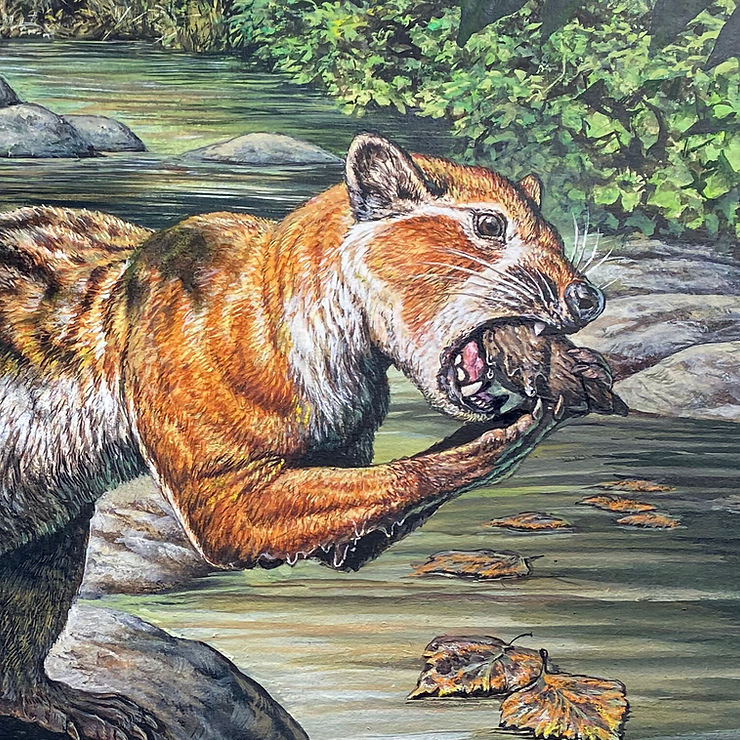By: Nathan Geng
Over 30 million years ago, a species of animal that resembled a bear lived near a river in modern-day North Dakota. Paleontologists excavated the fossil of the bear in 1982. “It’s a fabulous specimen that is just exquisitely preserved,” said Xiaoming Wang, a vertebrate paleontologist at the Natural History Museum of Los Angeles County. His team found 5 similar animals in nearby sediments.
By conducting comparisons with modern animals and extinct counterparts, Dr. Wang’s team placed the animal in the evolution of mammalian carnivores. From this specimen’s relatively large molars, it was placed with arctoids, a vast group of carnivores.
Dr. Wang’s team named the animal Eoarctos vorax: eoarctos, dawn bear in Greek, and vorax, voracious in Greek, demonstrating the appetite that animal had.
From the snout to the tail, the dawn bear was around 2 feet long. Many of its skeletal features resembled a raccoon; however, it has claws longer and sharper than raccoons, Eoarctos would have been adept at climbing trees and using this ability to escape from predators. The Eoarctos seemed to be the earliest carnivore capable of crushing hard objects, such as bones. A dental exam illustrated that the animal had broken teeth and infected jaws.
“Those are the broken off roots,” Dr. Van Valkenburgh said. Some of the other individuals also lost teeth and had infected jaws in similar fashion. “They must have been eating very hard things,” she said.
Dr. Wang’s team suspected that the Eoarctos munched on mollusks in the prehistoric Dakota rivers. Because of their small skull, the bones of the mollusks seemed unlikely to cause this sort of damage, though Dr. Van Valkenburgh thought the damage could’ve been caused by fruits with hard pits.
The chomping of hard foods is a specialized way of eating. “That in itself is kind of interesting,” said Dr. Van Valkenburgh.
Eating might be the reason that this Eoarctos male died young. Dr. Wang thought that it may be because of a blood infection. The creature would have suffered for weeks and months.
“But for all of his suffering, he certainly made a huge contribution to science,” said Dr. Wang.











